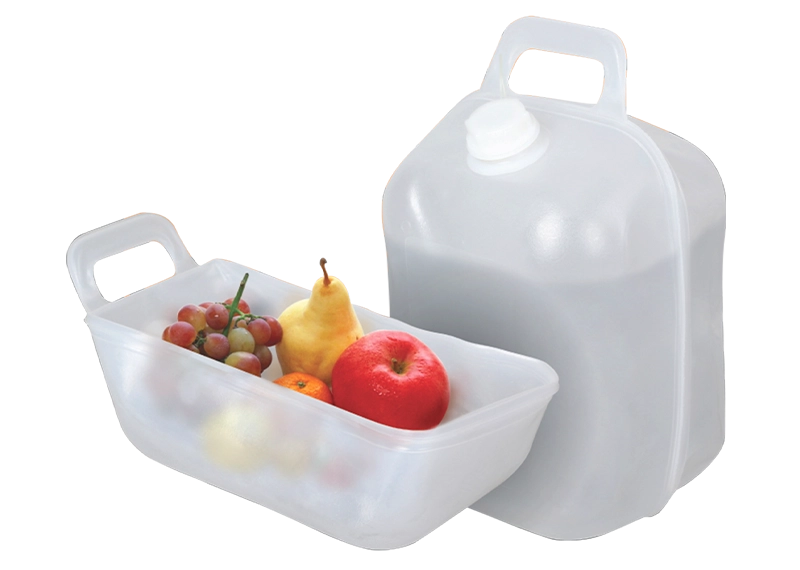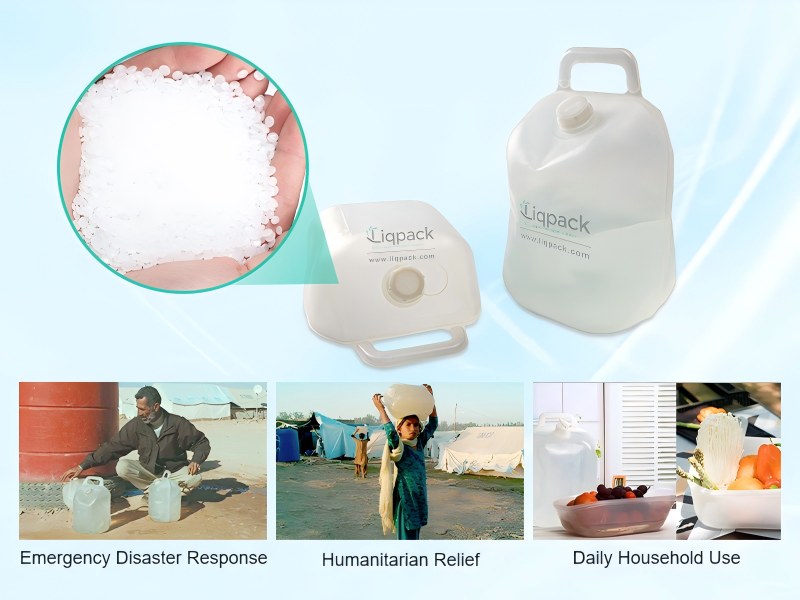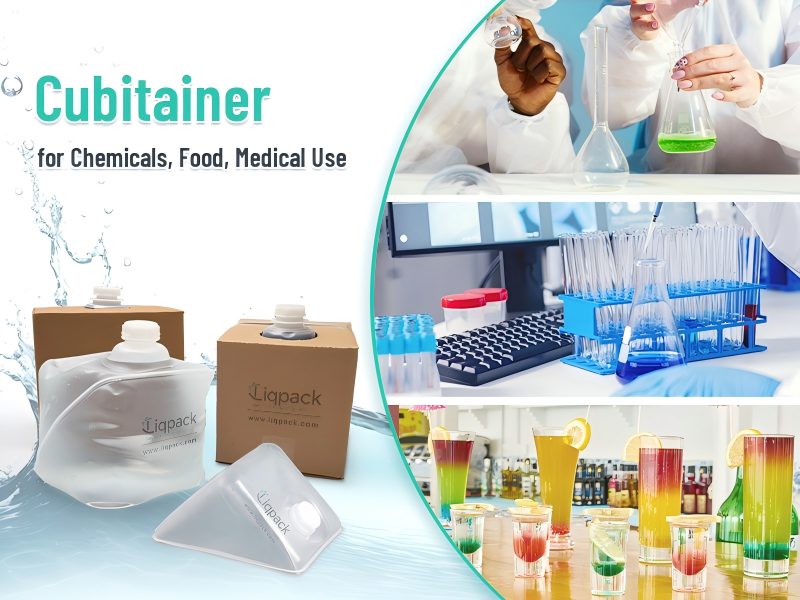
In packaging and logistics, cost efficiency is key when choosing container solutions. Cubitainers—collapsible bag-in-box plastic containers with cardboard outers—are gaining popularity across chemical, food, beverage, pharmaceutical, and agricultural sectors. But are they truly more cost-effective than rigid bottles, jerry cans, drums, or other bulk containers?
This article examines cubitainers through material costs, logistics, handling, environmental impact, and operational efficiency to help decision-makers choose wisely.
What Are Cubitainers?
Cubitainers are flexible, collapsible plastic containers typically made of low-density polyethylene (LDPE). They are usually inserted into corrugated cardboard boxes, creating a strong yet lightweight package that combines the benefits of flexible bags and rigid containers. Sizes generally range from 1 L up to 20 L (or even larger for industrial applications).
Key features include:
- Collapsible structure: When empty, they can be folded flat, saving storage space.
- Built-in spouts or dispensing caps: Allow controlled pouring or connection to filling equipment.
- Protective outer box: Enhances stackability and protects the inner liner.
Industries use cubitainers for packaging liquid chemicals, solvents, food ingredients, syrups, oils, cleaning products, and pharmaceuticals, especially where cleanliness, space savings, and controlled dispensing are required.
Initial Packaging Costs vs Traditional Containers
One of the first factors companies consider is the purchase price of the container itself. Cubitainers typically involve two components:
- The inner LDPE bag (cubitainer)
- The outer corrugated carton
While this dual structure may seem more complex than a single rigid container, unit costs are often comparable or lower, particularly in medium to large order quantities.
| Packaging Type | Average Unit Cost (10 L) | Shipping State | Notes |
| Cubitainer (bag + box) | $1.00 – $1.40 | Collapsible | Cost varies by LDPE grade and box strength |
| Jerry Can (HDPE) | $1.20 – $1.80 | Rigid | Higher material use, more shipping volume |
| Glass Bottle (10 L) | $3.00 – $5.00 | Rigid | Heavy, fragile, higher shipping cost |
| Tin Can | $1.50 – $2.50 | Rigid | Not collapsible; used for solvents/oils |
Why can cubitainers be cheaper per unit:
- LDPE bags use less plastic resin than rigid containers.
- Outer cartons are produced from recycled paper and are inexpensive to manufacture.
- Bulk orders are flat-packed, lowering inbound shipping costs to your factory or filling line.
In many cases, the total landed cost of cubitainers can be 10–20 % lower than equivalent rigid containers.
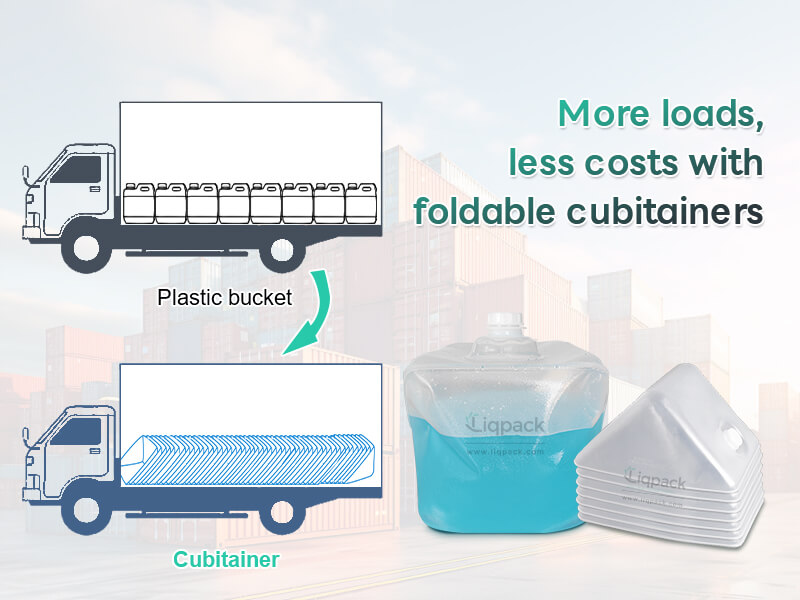
Storage & Transportation Cost Savings
Empty Container Logistics
Rigid containers (e.g., jerry cans) occupy full volume even when empty. Cubitainers, on the other hand, have the ability to collapse, which enables the transportation of significantly more units in the same area.
For an illustration, a 40-foot shipping container may normally accommodate:
- Approximately 10,000 empty cubitainers (10 L), flat packed.
- Only about 2,000–2,500 empty jerry cans of the same size.
This difference translates directly into lower inbound freight cost per unit and reduced warehouse storage space.
Filled Container Transportation
When filled, cubitainers fit tightly within cartons and pallets, resulting in excellent cube utilization. Their square or rectangular shape minimizes dead space between containers on pallets, compared to round bottles or drums. As a result:
- More liters of product can be shipped per truckload.
- Pallets are more stable and easier to stack.
- Less secondary packaging is needed to stabilize the load.
These factors combine to produce noticeable freight savings, especially for export shipments where container utilization is crucial.
Handling and Operational Efficiency
Cubitainers offer operational advantages that can reduce labor and process costs:
- Lightweight design: Workers handle them more easily than rigid containers, lowering the risk of injury and speeding up manual operations.
- Integrated spouts and caps: Facilitate controlled dispensing and reduce spillage.
- Easy integration with filling lines: Cubitainers can be filled via standard nozzles or specialized bag-in-box filling machines, offering fast changeovers.
- Reduced breakage: Unlike glass, cubitainers are flexible and less prone to cracking or leaking during handling.
Additionally, many industries value the hygienic design of cubitainers. They are usually produced in cleanroom environments and can be supplied pre-sterilized, reducing the need for container rinsing or sanitization before filling—an indirect but important cost saving for food and pharmaceutical manufacturers.
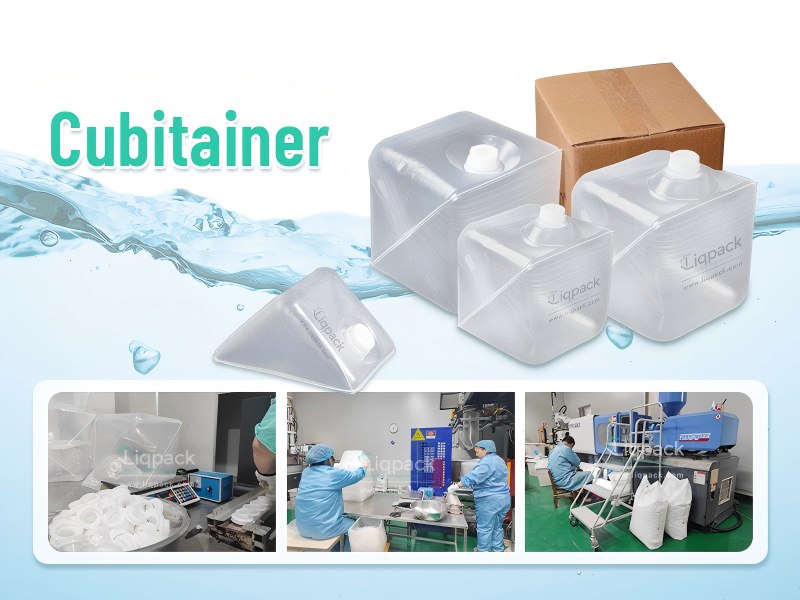
Product Protection and Shelf Life
Cost effectiveness isn’t only about price; it also involves reducing product loss and maintaining quality. Cubitainers offer strong performance in this area:
- Barrier protection: LDPE provides moderate barrier properties. When needed, multilayer cubitainers with EVOH or aluminum barrier films can be used for sensitive liquids.
- Box shielding: The outer carton blocks light, which helps preserve light-sensitive contents like chemicals or pharmaceuticals.
- Reduced oxidation and contamination: Because the bag collapses as product is dispensed, air ingress is minimized, extending shelf life.
In comparison, rigid containers often allow air to enter as liquid is poured out, leading to oxidation, microbial growth, or evaporation over time. For businesses dealing with high-value or sensitive liquids, this reduced waste can significantly improve overall cost efficiency.
Environmental Impact and Disposal Costs
Sustainability is becoming a key cost driver. Cubitainers can offer environmental and disposal advantages:
- Less plastic per container: Lower resin use means reduced environmental tax or disposal fees in many regions.
- Easier recycling: LDPE bags can be separated from cartons. Boxes are typically 100 % recyclable.
- Lower transportation emissions: Fewer trucks are needed to deliver empty containers, reducing the carbon footprint.
However, disposal requires separating the inner bag and outer box, which can add minimal labor steps. Some industries set up return or recycling programs to collect and process used cubitainers, which can further improve cost efficiency over time.
Comparison Across Applications
Chemicals and Industrial Liquids
Cubitainers are popular for industrial chemicals, cleaning agents, lubricants, and solvents. Their collapsible nature simplifies hazardous material disposal because less residue remains inside compared to rigid containers. This can lower cleaning or disposal costs.
For non-hazardous chemicals, cubitainers are often the most cost-efficient option for small to medium volumes (5–20 L), balancing price, storage, and ease of handling.
Food and Beverage
Food producers use cubitainers for syrups, oils, flavorings, and bulk ingredients. The light barrier provided by cartons and optional EVOH liners helps maintain quality. Because cubitainers collapse as product is used, they minimize oxidation—important for oils and juices.
They also reduce the cost of return logistics since they are typically single-use and recyclable, avoiding the need for washing returnable drums or bottles.
Pharmaceuticals and Specialty Liquids
For sterile liquids, cubitainers can be supplied gamma-sterilized and double-bagged, allowing direct cleanroom use. The ability to maintain aseptic conditions during dispensing reduces contamination risk—a cost benefit when handling expensive or sensitive materials.
Potential Limitations and Hidden Costs
While cubitainers are often cost-effective, companies should also be aware of possible drawbacks:
- Limited stack strength: Because cubitainers rely on the outer box for structure, stacking too high can cause deformation if boxes are not strong enough. Investing in proper cartons is essential.
- Barrier properties: Standard LDPE has a lower gas and vapor barrier compared to HDPE bottles or metal cans. For oxygen-sensitive products, multilayer bags or additional foil liners may be required, adding some cost.
- Filling line compatibility: If a factory uses filling lines optimized for rigid containers, some equipment modifications might be needed to handle flexible cubitainers efficiently.
- Manual separation for recycling: The need to separate the bag and box for recycling might involve a small labor cost, though this is usually outweighed by the material savings.
Despite these potential issues, most companies find that the cost savings in logistics, storage, and material consumption more than compensate for any extra considerations.
Total Cost of Ownership: A Practical Example
Consider a medium-sized food processing company packaging 500,000 L of syrup annually in 10 L containers.
Option A – Rigid Jerry Cans
- Unit cost: $1.50
- Total container cost: $75,000
- Inbound freight cost: $5,000
- Storage cost: $2,000/year (more space needed)
- Disposal fee: $0.10/container × 50,000 units = $5,000
Total annual cost ≈ $87,000
Option B – Cubitainers
- Unit cost (bag + box): $1.20
- Total container cost: $60,000
- Inbound freight cost: $2,000 (more compact)
- Storage cost: $1,000/year
- Disposal fee: $0.05/container × 50,000 units = $2,500
Total annual cost ≈ $65,500
Savings: $21,500/year (approximately 25 %)
This simple scenario illustrates how cubitainers can deliver tangible cost reductions even before accounting for improved pallet efficiency or lower product waste.
Final Verdict: Are Cubitainers Cost-Effective?
Based on material costs, storage and transportation savings, operational efficiency, and product protection, cubitainers are highly cost-effective for many applications, especially:
- Liquids shipped in medium volumes (5–20 L)
- Export shipments where space utilization matters
- Products where oxidation or contamination is a concern
- Companies aiming to reduce environmental impact and storage costs
They may require slight operational adjustments for filling or recycling, but these are generally minor compared to the significant overall cost benefits.
- Liqpack

